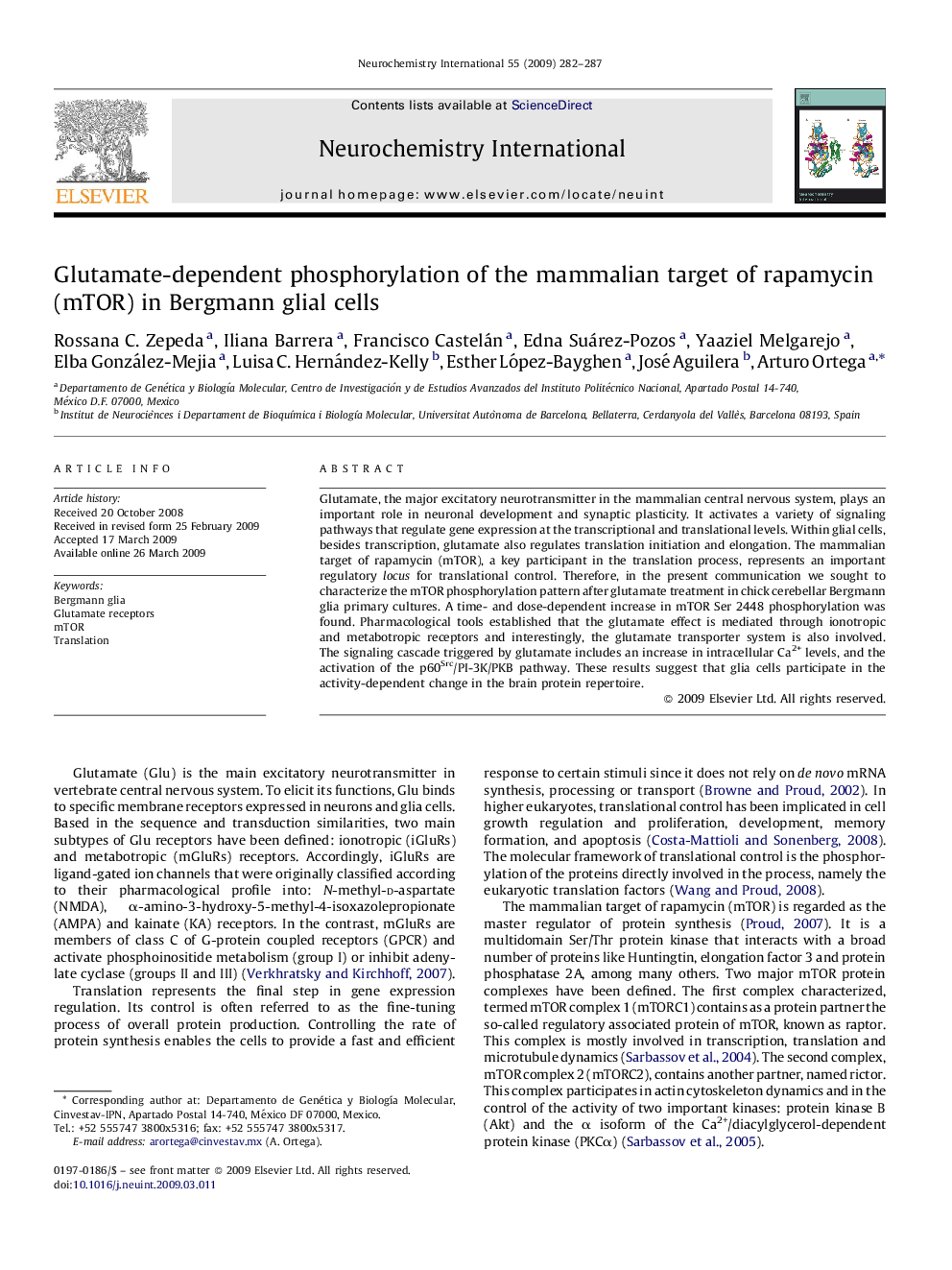| Article ID | Journal | Published Year | Pages | File Type |
|---|---|---|---|---|
| 10958359 | Neurochemistry International | 2009 | 6 Pages |
Abstract
Glutamate, the major excitatory neurotransmitter in the mammalian central nervous system, plays an important role in neuronal development and synaptic plasticity. It activates a variety of signaling pathways that regulate gene expression at the transcriptional and translational levels. Within glial cells, besides transcription, glutamate also regulates translation initiation and elongation. The mammalian target of rapamycin (mTOR), a key participant in the translation process, represents an important regulatory locus for translational control. Therefore, in the present communication we sought to characterize the mTOR phosphorylation pattern after glutamate treatment in chick cerebellar Bergmann glia primary cultures. A time- and dose-dependent increase in mTOR Ser 2448 phosphorylation was found. Pharmacological tools established that the glutamate effect is mediated through ionotropic and metabotropic receptors and interestingly, the glutamate transporter system is also involved. The signaling cascade triggered by glutamate includes an increase in intracellular Ca2+ levels, and the activation of the p60Src/PI-3K/PKB pathway. These results suggest that glia cells participate in the activity-dependent change in the brain protein repertoire.
Related Topics
Life Sciences
Biochemistry, Genetics and Molecular Biology
Cell Biology
Authors
Rossana C. Zepeda, Iliana Barrera, Francisco Castelán, Edna Suárez-Pozos, Yaaziel Melgarejo, Elba González-Mejia, Luisa C. Hernández-Kelly, Esther López-Bayghen, José Aguilera, Arturo Ortega,
